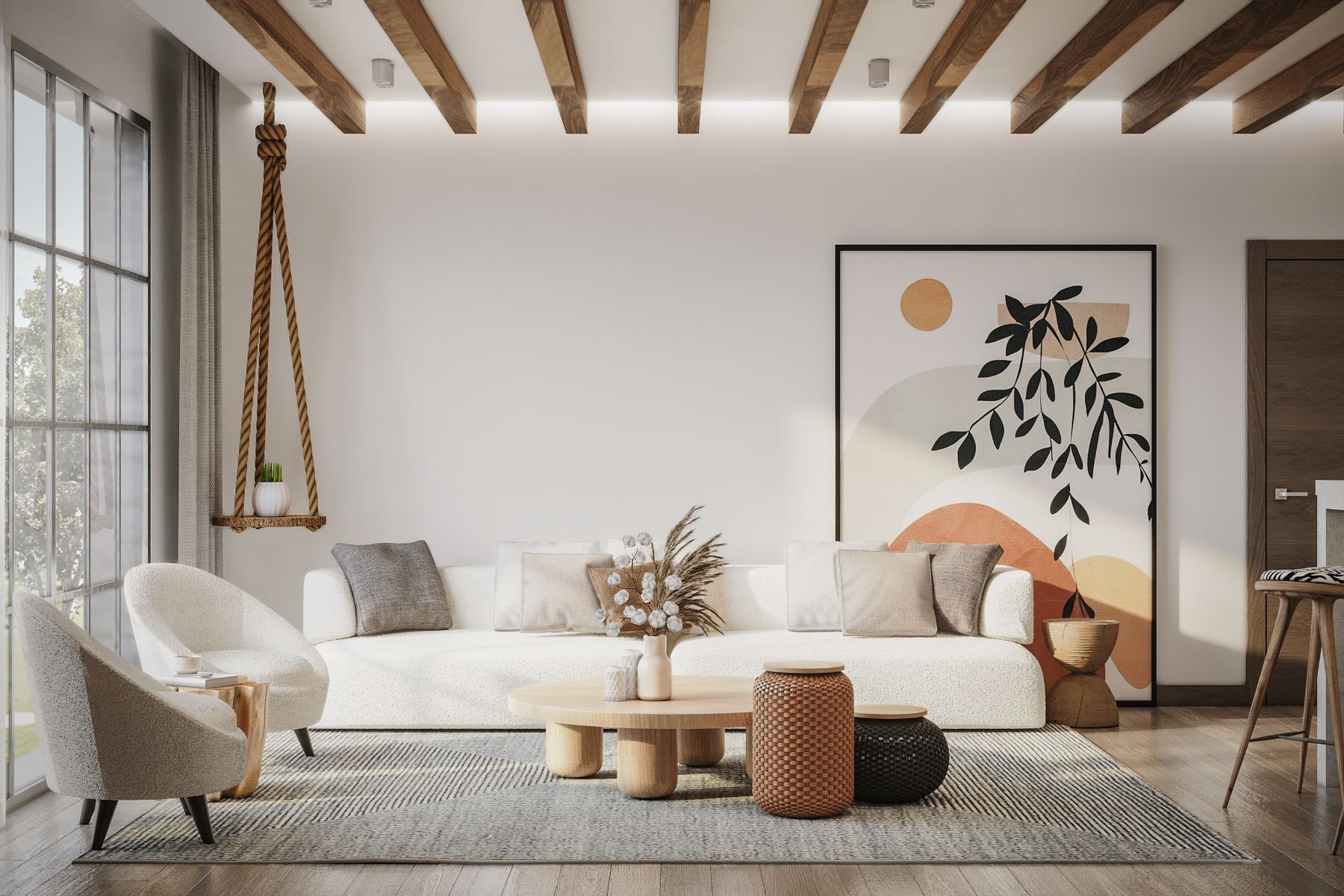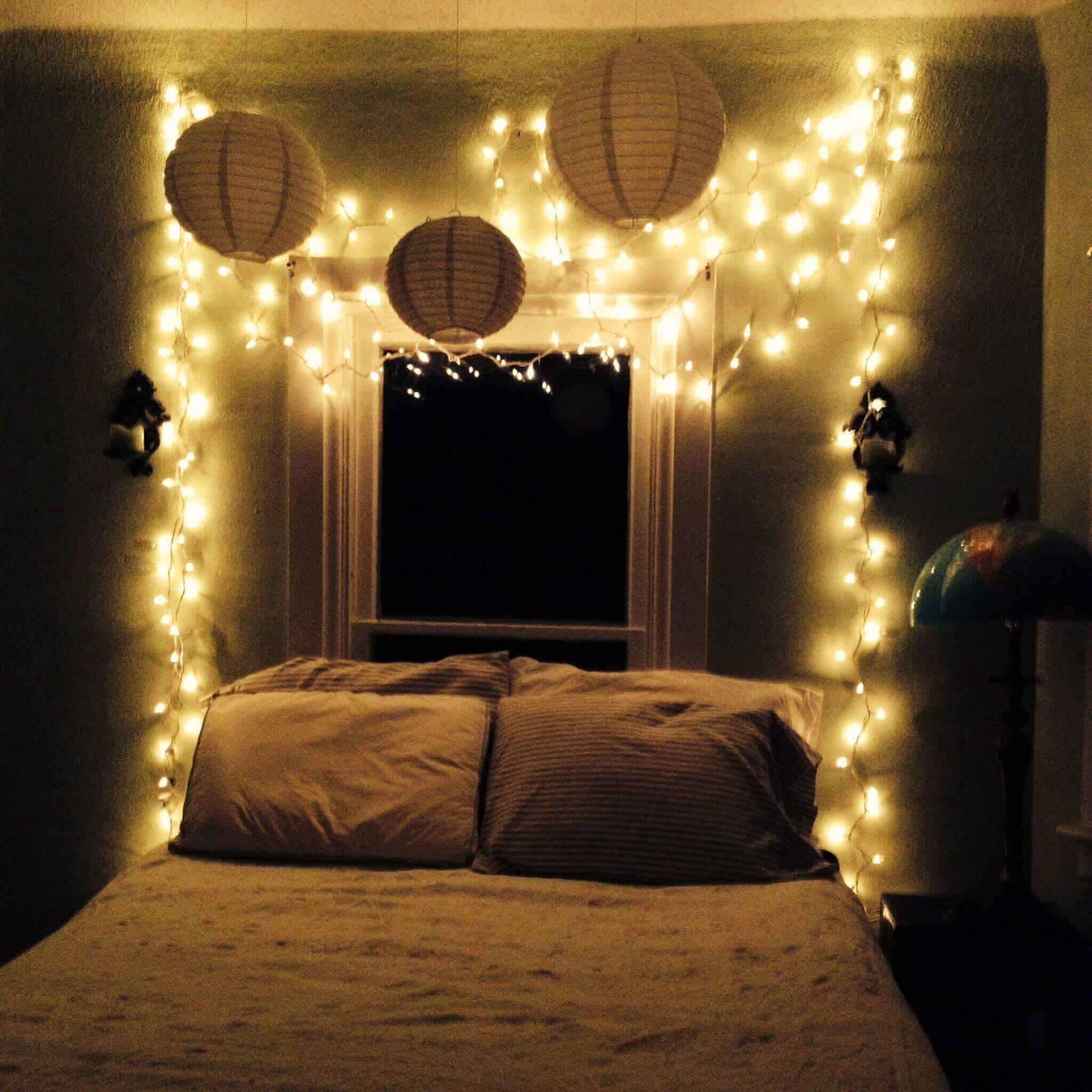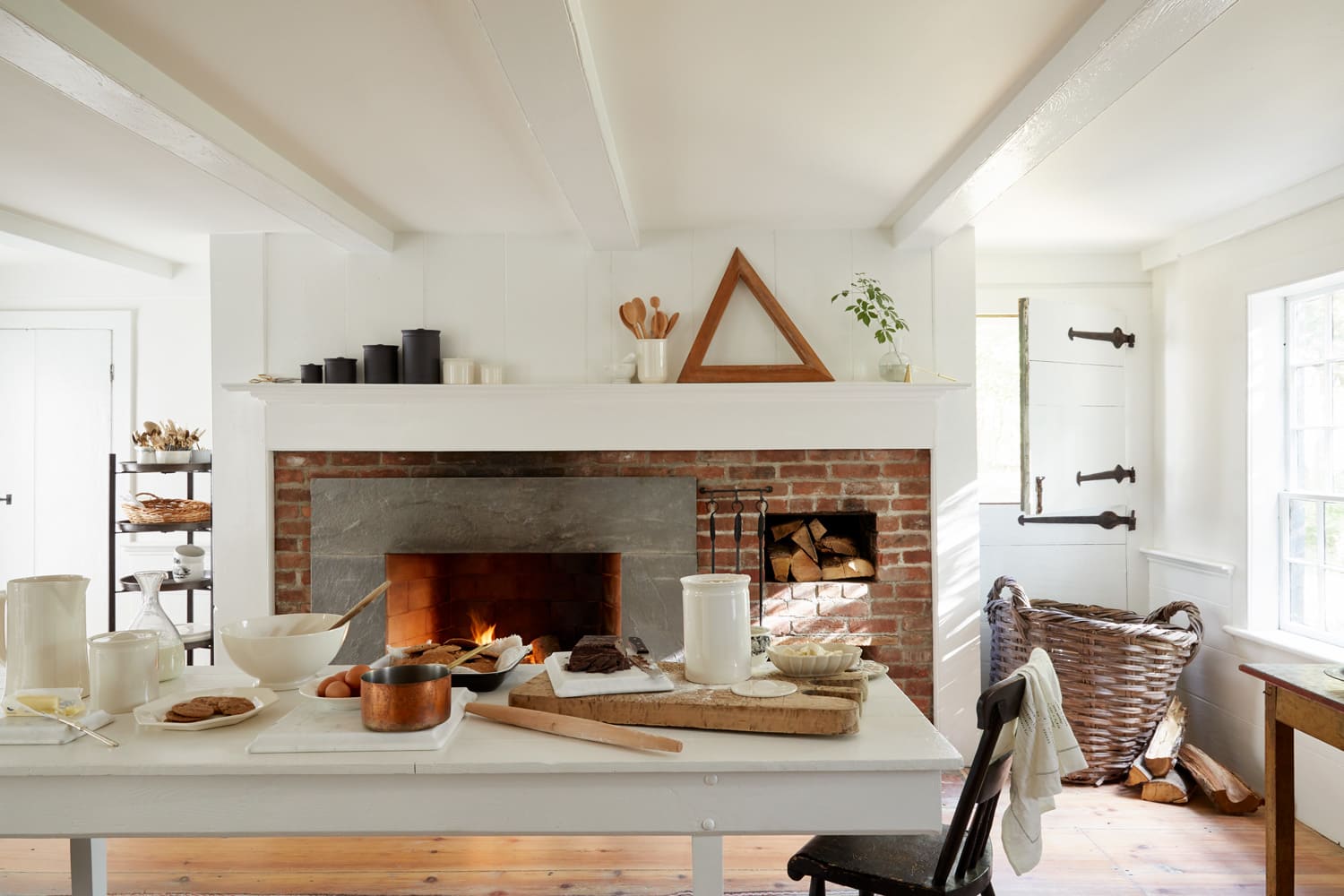Home>diy>Architecture & Design>How To Incorporate Japanese Influence Into House Design


Architecture & Design
How To Incorporate Japanese Influence Into House Design
Modified: January 19, 2024
Discover how to infuse Japanese architectural design elements into your home, creating a harmonious blend of modern aesthetics and traditional influences. Enhance your house with the beauty of Japanese culture.
(Many of the links in this article redirect to a specific reviewed product. Your purchase of these products through affiliate links helps to generate commission for Storables.com, at no extra cost. Learn more)
Introduction
When it comes to home design, incorporating cultural influences can add a unique and captivating touch to your living space. One such influence that has gained popularity in recent years is Japanese design. Known for its minimalism, tranquility, and harmonious balance, Japanese architecture and interior design can create a serene and elegant atmosphere within your home.
In this article, we will explore how to incorporate Japanese influence into house design. Whether you’re looking to create a Zen-inspired sanctuary or simply infuse a touch of Japanese aesthetics, these ideas will help you bring the beauty of Japan into your home.
Key Takeaways:
- Embrace the timeless beauty of Japanese design by incorporating elements such as shoji screens, tatami flooring, and natural materials to create a serene and authentic living space that celebrates simplicity and tranquility.
- Infuse your home with the rich cultural heritage of Japanese art, calligraphy, and traditional crafts to add depth, elegance, and a sense of mindfulness, creating a space that reflects the beauty of Japanese aesthetics and artistic expression.
Understanding Japanese Aesthetics
Before delving into the specifics of incorporating Japanese influence into house design, it is essential to understand the underlying principles of Japanese aesthetics. Japanese design is heavily influenced by concepts such as minimalism, nature, and harmony.
One key principle in Japanese aesthetics is “Wabi-Sabi,” which embraces the beauty of imperfection and transience. It emphasizes simplicity, modesty, and the appreciation of natural materials and textures. Another important concept is “Ma,” which refers to the notion of space and the balance between empty and occupied areas. Creating a sense of spaciousness is crucial in Japanese design.
Nature also plays a significant role in Japanese aesthetics. The Japanese value the harmony between the man-made environment and the natural world. This is evident in the use of natural materials such as wood, stone, and bamboo, as well as the incorporation of gardens and views of nature into the design.
By understanding these principles, you can begin to appreciate the essence of Japanese design and use them as a guide when incorporating Japanese influence into your house design.
Elements of Traditional Japanese House Design
Traditional Japanese house design is characterized by its simplicity, functionality, and connection to nature. Understanding the key elements of this design style will help you incorporate Japanese influence into your home.
- Tatami Flooring: Tatami flooring is a defining feature of traditional Japanese homes. Made from tightly woven straw, tatami mats are soft, durable, and provide a comfortable surface for sitting and sleeping. Incorporating tatami flooring into your design can add an authentic touch of Japanese aesthetics.
- Sliding Doors (Shoji) and Room Dividers (Fusuma): Shoji screens and fusuma are versatile elements in Japanese house design. Shoji screens, made from translucent paper mounted on a wooden frame, allow natural light to filter through while creating privacy. Fusuma, on the other hand, are opaque sliding doors that can be used to divide rooms or create separate spaces within a larger room.
- Engawa: Engawa refers to the transitional space between the interior and exterior of a traditional Japanese house. Typically, it is a narrow wooden platform that runs along the exterior of the house, connecting various rooms. Incorporating an engawa into your design can create a seamless connection to the outdoors and provide a place to relax and enjoy the surrounding nature.
- Simplicity and Minimalism: Japanese design places a strong emphasis on simplicity and minimalism. Uncluttered spaces, clean lines, and a neutral color palette are key elements of this aesthetic. Keep the design minimal and let the natural materials and functional elements shine.
- Fusuma and Shoji: Fusuma are opaque sliding doors that can be used to divide rooms or create separate spaces within a larger room. Shoji are translucent paper screens that allow natural light to filter through while creating privacy. Incorporating these traditional elements can add an authentic touch to your Japanese-inspired design.
By incorporating these elements into your house design, you can create a space that reflects the timeless beauty and functionality of traditional Japanese architecture.
Applying Minimalism in House Design
One of the key characteristics of Japanese design is its minimalistic approach. Embracing this concept in your house design can create a serene and clutter-free living space. Here are a few tips for applying minimalism to your home:
- Declutter and Simplify: Start by decluttering your space and getting rid of unnecessary items. Keep only the essentials and opt for clean lines and simple forms in your furniture and decor choices.
- Neutral Color Palette: Choose a neutral color palette, such as whites, beiges, and subtle earth tones, to create a calm and soothing atmosphere in your home. This will help highlight the natural materials and textures used in your design.
- Open Floor Plans: Consider an open floor plan that allows for a smooth flow between different areas of your home. This encourages a feeling of spaciousness while minimizing visual clutter.
- Storage Solutions: Incorporate ample storage solutions to keep your space organized and clutter-free. Built-in cabinets, hidden storage compartments, and multifunctional furniture can help maintain an uncluttered appearance.
- Focus on Functionality: Choose furniture and decor items that are both stylish and functional. Opt for pieces with clean lines and a streamlined design to maintain a minimalist aesthetic. Invest in multi-purpose furniture that serves more than one function to maximize space and minimize clutter.
- Empty Space: Embrace the concept of “Ma” by leaving empty spaces in your design. This allows for breathing room and creates a sense of spaciousness. Avoid overcrowding your space with too many furniture and decor pieces.
By applying minimalism in your house design, you can create a peaceful and harmonious environment that reflects the essence of Japanese aesthetics.
Incorporating Natural Materials
Natural materials are a fundamental element of Japanese design, as they bring a sense of warmth, texture, and connection to nature. To incorporate this aspect into your house design, consider the following ideas:
- Wood: Utilize wood in various forms, such as exposed beams, hardwood floors, and paneling, to add a natural and rustic touch to your space. Opt for lighter wood tones like oak or bamboo for a lighter and airy feel, or darker wood like mahogany for a more traditional look.
- Stone: Incorporate stone elements, such as stone tiles, granite countertops, or a stone accent wall, to add a sense of solidity and grounding to your design. Stone can bring an earthy and serene atmosphere to your space.
- Bamboo: Bamboo is a versatile material commonly used in Japanese design. Introduce bamboo elements into your home through flooring, furniture, or decorative items. Its natural beauty and sustainable nature make it an excellent choice for an eco-friendly design.
- Rattan and Wicker: Rattan and wicker furniture and accessories create a sense of lightness, texture, and naturalness. Incorporate these materials in your seating or storage options to add a touch of organic charm to your space.
- Paper and Fabric: Japanese design often features paper elements such as shoji screens and washi paper lanterns. Additionally, use natural fabrics like cotton or linen for curtains, drapes, or upholstery to evoke a sense of simplicity and natural beauty.
By incorporating these natural materials into your house design, you can create a harmonious and grounding atmosphere that is characteristic of Japanese aesthetics.
Read more: How To Design A Traditional Japanese House
Creating Zen Gardens
Zen gardens, also known as Japanese rock gardens or dry landscape gardens, are a hallmark of Japanese design. These gardens are designed to evoke a sense of peace, tranquility, and meditation. Here are some tips for creating your own Zen garden:
- Minimalistic Design: Zen gardens embrace the principle of minimalism. Keep the design simple and uncluttered, focusing on clean lines and balanced composition. Avoid excessive ornamentation and opt for a serene and balanced arrangement of rocks, gravel, and plants.
- Raked Gravel or Sand: A key element in Zen gardens is the use of raked gravel or sand, symbolizing water or the ripple effect. Carefully rake the gravel in patterns to create a harmonious and meditative effect. Alternatively, you can use sand to create swirling patterns reminiscent of water.
- Use of Rocks and Stones: Rocks and stones play a significant role in Zen garden design. Select different sizes and shapes of rocks to represent mountains, islands, or focal points within the garden. Place them strategically to create a sense of balance and harmony.
- Pruned Trees and Shrubs: Incorporate carefully pruned trees and shrubs, such as bonsai or Japanese maple, to add a touch of nature to your Zen garden. Pruning techniques, such as cloud pruning or bonsai shaping, can create interesting shapes and add visual interest to the garden.
- Symbolic Elements: Consider adding symbolic elements like a stone lantern, bamboo fountain, or a small bridge to enhance the overall Zen atmosphere. These elements can represent illumination, the flow of water, or the connection between different areas of the garden.
- Quiet Seating Area: Create a designated seating area in your Zen garden where you can sit and meditate. Use simple and comfortable seating such as wooden benches or floor cushions. Surround the seating area with strategically placed rocks or plants to create a peaceful and enclosed space.
A Zen garden can be a delightful addition to your home, bringing a sense of tranquility and mindfulness to your outdoor space. Whether you have a large garden or just a small corner, you can create a mini Zen garden that brings the essence of Japan into your home.
Traditional Japanese Interior Design
Traditional Japanese interior design embraces simplicity, harmony, and a connection to nature. It focuses on creating a serene and Zen-like atmosphere within the home. To capture the essence of traditional Japanese interior design, consider the following elements:
- Sliding Doors (Fusuma) and Screens (Shoji): Sliding doors and screens are iconic in Japanese design. Fusuma, which are opaque sliding doors, and shoji, which are translucent paper screens, are used to create flexible spaces and allow natural light to filter through. Incorporate these elements to add authenticity and functionality to your interior design.
- Tatami Flooring: Tatami flooring is a traditional element in Japanese homes. Made from woven straw mats, tatami adds warmth and natural texture to any space. Consider incorporating tatami mats in designated areas or even throughout your entire home for an authentic Japanese feel.
- Minimal Furniture: Japanese interior design favors minimal furniture arrangements. Opt for low-profile furniture with clean lines and a simple design. Go for pieces made from natural materials like wood and bamboo, and avoid excessive ornamentation.
- Zaisu Floor Chairs: Zaisu floor chairs are a traditional Japanese seating option. They are cushioned and can be placed directly on the tatami floor. Incorporating zaisu chairs in your interior design provides a casual and comfortable seating experience that is authentic to Japanese culture.
- Fusuma and Shoji Art: Enhance the aesthetics of your interior design by incorporating Fusuma and Shoji art. These can be intricate paintings or calligraphy on the sliding doors or screens. These art pieces not only add visual interest but also reflect the traditional Japanese art forms.
- Origami and Ikebana: Displaying origami paper art or practicing ikebana (the art of flower arrangement) can add a touch of traditional Japanese culture to your interior design. These art forms are cherished in Japan and embody the appreciation for beauty in simplicity and nature.
- Soft Lighting and Natural Light: Soft and warm lighting plays a crucial role in creating a serene atmosphere in traditional Japanese interior design. Use traditional Japanese lanterns or soft pendant lights to create ambient lighting. Additionally, maximize the use of natural light by ensuring unobstructed windows and incorporating light-toned window coverings.
By incorporating these elements into your interior design, you can create a space that reflects the timeless elegance and tranquility of traditional Japanese living.
Consider incorporating traditional Japanese elements such as sliding doors, tatami mats, and shoji screens into your house design. Use natural materials like wood and stone, and create a minimalist and serene atmosphere.
Using Shoji Screens and Fusuma
Shoji screens and fusuma are iconic elements of traditional Japanese architecture and interior design. These sliding doors and screens not only serve functional purposes but also add a distinct aesthetic appeal to any space. Here’s how you can incorporate shoji screens and fusuma into your home:
- Create Flexible Spaces: Shoji screens and fusuma allow you to create flexible spaces within your home. You can easily slide them open or closed to divide larger rooms or create separate areas as needed. This versatility makes them an excellent choice for homes with open floor plans or small living spaces.
- Provide Privacy: Shoji screens, made of translucent paper mounted on a wooden frame, are designed to allow natural light to filter through while providing privacy. They create a soft and diffused light effect, giving your space a tranquil and serene ambiance without sacrificing privacy.
- Add Visual Interest: Shoji screens and fusuma can act as beautiful design elements that add visual interest to your interior. The delicate pattern of the wood lattice on shoji screens and the elaborate painted or woven designs on fusuma can become focal points and enhance the aesthetic appeal of your space.
- Integrate Modern Elements: Don’t limit yourself to the traditional use of shoji screens and fusuma. You can incorporate them in modern ways by using materials like frosted glass, acrylic, or even fabric instead of traditional paper. This allows you to adapt the classic design to suit your personal style while still capturing the essence of Japanese aesthetics.
- Create a Japanese-inspired Room: If you want to fully embrace the Japanese design theme, consider dedicating an entire room or space in your home to Japanese-inspired decor. Use shoji screens and fusuma to partition the room into different areas, such as a meditation corner, a reading nook, or a tea room. This creates a serene and immersive experience in your home.
- Combine with Natural Materials: To enhance the Japanese aesthetic, consider incorporating shoji screens and fusuma alongside other natural materials like wood, bamboo, and stone. This combination creates a harmonious and balanced atmosphere that is characteristic of traditional Japanese design.
By incorporating shoji screens and fusuma into your home, you can add functionality, beauty, and a touch of Japanese elegance to your interior design.
Incorporating Tatami Flooring
Tatami flooring is a traditional element of Japanese architecture that adds a unique and authentic touch to any space. Made from tightly woven straw, tatami mats are not only visually appealing but also provide a comfortable and natural flooring option. Here are some ideas on how to incorporate tatami flooring into your home:
- Designate a Tatami Room: Dedicate a specific room or area in your home to have tatami flooring. This could be used as a living room, meditation space, or a traditional tea room. The tactile and natural qualities of tatami mats create a serene and calming atmosphere that is perfect for these types of spaces.
- Combine Tatami with Western Style: If you prefer a fusion of Japanese and Western styles, you can partially incorporate tatami flooring into a room. For example, you can use tatami mats for a designated sitting area or place them under a low coffee table to create a cozy and relaxed space within a larger room.
- Use Tatami in Bedrooms: Tatami flooring is particularly suitable for bedrooms as it provides a comfortable and soothing surface for sleeping. Consider using tatami mats in the sleeping area of your bedroom or incorporating them as a natural and luxurious flooring choice in a Japanese-inspired guest room.
- Combine with Futon Beds: To embrace the traditional Japanese sleeping experience, pair tatami flooring with futon beds. The combination of the soft and organic feel of tatami mats with the comfort of a futon creates a cozy and minimalist bedroom space.
- Create a Zen Corner: Use tatami mats as the foundation for a Zen-inspired corner in your home. Arrange low seating such as floor cushions or zaisu chairs around a simple table to create a serene space for meditation, reading, or tea ceremonies. The natural texture of tatami flooring adds to the overall tranquility of the environment.
- Extend Tatami to Hallways: Extend the use of tatami flooring to your hallways for a seamless and cohesive look throughout your home. This creates a flow and connection between different areas, enhancing the overall design and atmosphere.
By incorporating tatami flooring into your home, you can create a space that exudes the beauty of Japanese design and brings a sense of calm and serenity to your living environment.
Read more: How Does Television Influence Society?
Adding Japanese-inspired Furniture and Decorations
To fully embrace the Japanese design aesthetic, incorporating Japanese-inspired furniture and decorations can truly transform your home into a serene and authentic space. Here are some ideas on how to add Japanese-inspired elements to your interior design:
- Low-lying Furniture: Choose low-lying furniture pieces that reflect the traditional Japanese seating style. Look for pieces like chabudai (low dining tables), zaisu (floor chairs), or even a kotatsu (a low table with a built-in heating element) for a cozy and intimate seating experience.
- Futons and Shikibuton: Consider incorporating futons or shikibuton (thin mattresses) as a Japanese-inspired bedding option. These can be used in bedrooms or as seating in tatami rooms. Opt for natural fabrics and materials to maintain an authentic touch.
- Shoji Lamps and Lanterns: Add soft and ambient lighting to your space with shoji lamps or lanterns. These traditional lighting fixtures made with paper or fabric screens create a warm and inviting glow, reminiscent of traditional Japanese interiors.
- Butsudan: For those interested in Japanese spirituality and culture, a butsudan can be a significant addition to your home. A butsudan is a miniature Buddhist altar that can be placed prominently in a designated area for meditation and reflection.
- Japanese Sliding Panel Wall Art: Incorporate Japanese sliding panel wall art, known as fusuma-e, to add an artistic and cultural element to your home. These painted or printed panels can depict traditional scenes, nature motifs, or calligraphy, bringing a touch of Japanese artistry to your space.
- Bonsai and Ikebana: Embrace the art of bonsai and ikebana (flower arrangement) by placing a bonsai tree or a simple ikebana arrangement as a centerpiece in your space. These elements bring a sense of nature and tranquility to the room, reflecting the Japanese appreciation for simplicity and beauty.
- Japanese Art and Scrolls: Display traditional Japanese art, such as ukiyo-e prints or calligraphy scrolls, on your walls. These artworks can serve as focal points and embody the rich cultural heritage of Japan.
- Noren Curtains: Add a touch of Japanese charm to your doorways or windows with noren curtains. These split curtains are often adorned with symbolic patterns or designs and can be used as room dividers or to provide privacy while still allowing airflow and light.
- Bamboo and Natural Fiber Accessories: Incorporate bamboo and natural fiber accessories, such as woven baskets, trays, or blinds, to introduce a sense of texture and nature into your home. These elements add warmth and a rustic touch to your Japanese-inspired design.
By selectively incorporating Japanese-inspired furniture and decorations, you can create a harmonious and culturally rich living space that captures the essence of Japanese design.
Embracing Wabi-Sabi
Incorporating the philosophy of wabi-sabi into your home can bring a unique sense of beauty, serenity, and authenticity. Wabi-sabi is a traditional Japanese concept that celebrates the beauty of imperfection, impermanence, and simplicity. Here are some ways to embrace wabi-sabi in your interior design:
- Natural Materials and Textures: Choose natural materials such as unfinished wood, clay, stone, or bamboo for furniture, flooring, and decor. Emphasize the beauty of their raw and imperfect textures, allowing their natural qualities to shine through.
- Embrace Imperfection: Rather than seeking perfection, embrace the beauty found in imperfection. Incorporate handmade or artisanal pieces with slight variations or irregularities. Celebrate the uniqueness of these items, showcasing the marks and patinas they acquire over time.
- Simplicity and Minimalism: Keep your design simple and uncluttered, focusing on essential elements. Avoid excessive ornamentation or unnecessary decorations. Let your space breathe, allowing each item to stand out and be appreciated on its own.
- Unrefined Beauty: In wabi-sabi, there is an appreciation for the beauty that comes with age and usage. Display antiques, worn-out objects, or items with visible repairs as they embody a rich history and tell a story. These elements add depth and character to your space.
- Muted Color Palette: Choose a muted color palette inspired by nature, such as earthy tones and soft neutrals. These colors create a calming and soothing atmosphere, enhancing the overall wabi-sabi aesthetic.
- Integrate Organic Elements: Bring nature indoors by incorporating organic elements like dried branches, potted plants, or bonsai trees. These elements connect you to the natural world and add a sense of tranquility and harmony to your space.
- Soft Lighting: Opt for soft and warm lighting to create a relaxed ambiance. Consider using paper lanterns, diffused light fixtures, or candles to cast a gentle glow that complements the wabi-sabi aesthetic.
- Appreciate the Present Moment: Wabi-sabi reminds us to find beauty in the present moment and to appreciate things as they are. Create spaces within your home for reflection and introspection, such as a meditation corner or a quiet reading nook.
- Balance and Harmony: Achieve balance and harmony in your design by carefully arranging elements with a sense of intention and simplicity. Create a peaceful and balanced atmosphere by incorporating natural symmetry, thoughtful arrangements, and a sense of flow.
By embracing the philosophy of wabi-sabi, you can create a home that exudes a sense of authenticity, simplicity, and appreciation for the imperfections and beauty of life.
Bringing in Natural Light and Views
Natural light and views play a crucial role in Japanese design, creating a sense of openness, connection to nature, and a feeling of tranquility within a space. Here are some strategies to bring in natural light and maximize your views:
- Large Windows and Glass Doors: Incorporate large windows and glass doors to maximize the amount of natural light entering your home. This not only brightens the space but also allows for unobstructed views of the surrounding landscape or garden.
- Translucent Shoji Screens: Install translucent shoji screens on windows or as room dividers. These screens allow light to filter through gently while maintaining privacy. The soft and diffused glow created by shoji screens adds a sense of calm and ethereal beauty to your interior.
- Use Mirrors Strategically: Place mirrors on walls opposite windows or glass doors to reflect and amplify natural light into the space. Mirrors also create a sense of spaciousness and depth, making your interior feel larger and more open.
- Skylights and Light Tunnels: Consider adding skylights or light tunnels to bring natural light into areas that may have limited access to windows. These architectural elements can illuminate interior spaces that would otherwise be dark and gloomy.
- Window Coverings: Opt for light and minimal window coverings that allow for maximum light penetration. Consider using sheer curtains or bamboo blinds that diffuse light while providing privacy during the day, allowing the beauty of natural light to filter into your space.
- Connect Indoor and Outdoor Spaces: Create a seamless connection between indoor and outdoor areas by designing your space with large glass walls or sliding doors. This allows for unobstructed views of the surrounding landscape and brings the beauty of nature directly into your home.
- Open Floor Plans: Design your home with an open floor plan to allow light to flow freely from one area to another. Removing unnecessary walls and partitions creates an uninterrupted flow of natural light throughout the space.
- External Structures and Awnings: Consider incorporating external structures like pergolas, awnings, or overhangs to control the amount of direct sunlight entering your home. These elements provide shade and diffuse the light while still allowing natural illumination to enter your space.
- Views of Nature: Orient your interior living spaces to take advantage of scenic views or natural elements, such as gardens, mountains, or bodies of water. Position seating areas, windows, or patios in a way that allows for optimal enjoyment of these views, creating a sense of calm and serenity.
By incorporating these strategies, you can enhance the natural light in your home and create a connection to the outside world, fostering a peaceful and harmonious environment inspired by Japanese design.
Integrating Japanese Art and Calligraphy
Japanese art and calligraphy have a rich cultural heritage and can bring a touch of elegance, symbolism, and artistic expression to your home. Integrating these elements allows you to capture the essence of Japanese aesthetics. Here are some ideas on how to incorporate Japanese art and calligraphy into your interior design:
- Hang Japanese Artwork: Display traditional Japanese artwork, such as ukiyo-e prints or Japanese watercolor paintings, on your walls. These art pieces often depict nature, landscapes, or scenes from everyday life and add a touch of authenticity and cultural richness to your interior.
- Showcase Calligraphy: Japanese calligraphy, known as shodo, is a revered art form that combines brushwork and ink on paper. Showcase calligraphy pieces by framing them or mounting them on scrolls. Display these works of art as focal points, providing a visual representation of the beauty and precision of this traditional art form.
- Create a Tokonoma: Set aside a dedicated space, known as a tokonoma, to display a scroll with calligraphy or a piece of art. The tokonoma is a traditional alcove found in Japanese homes or tea houses that serves as a place of honor for displaying treasured objects and art. Arrange a minimalistic and curated selection of items that reflect your appreciation for Japanese culture.
- Choose Japanese-style Frames: When framing artwork or photographs, opt for Japanese-style frames made of wood or bamboo. These frames often have a simple and minimal design that complements the aesthetics of Japanese art and adds a touch of authenticity to your display.
- Hang Noren Curtains with Japanese Motifs: Noren curtains, traditionally made of fabric with symbolic motifs or patterns, can be hung in doorways or windows as functional and decorative elements. Choose noren curtains featuring Japanese motifs such as cherry blossoms, waves, or traditional patterns to add a touch of Japanese artistry to your space.
- Display Ikebana Arrangements: Ikebana, the art of flower arrangement, is highly valued in Japanese culture. Display ikebana arrangements in your home using minimalistic vases or traditional ceramic containers. Choose seasonal flowers and branches to create a sense of harmony and bring the beauty of nature indoors.
- Incorporate Ceramics and Pottery: Japanese ceramics and pottery, renowned for their craftsmanship and simplicity, make excellent art and functional pieces. Display a collection of traditional tea bowls, vases, or plates as decorative elements on shelves or table surfaces. Their organic forms and natural glazes add an authentic touch to your interior.
- Create a Miniature Zen Garden: Zen gardens, also known as rock gardens, are often depicted in Japanese ink paintings or calligraphy. Use a shallow tray or a corner of your space to create a miniature rock garden with carefully arranged rocks, sand, and moss. This small Zen-inspired installation adds a sense of calm and contemplation to your home.
By integrating Japanese art and calligraphy into your interior design, you can infuse your space with cultural richness, aesthetic beauty, and a deep appreciation for the heritage of Japanese artistic expression.
Read more: How To Be A Home Decor Influencer
Conclusion
Incorporating Japanese influence into house design brings a sense of serenity, harmony, and cultural richness to your living space. By understanding the principles of Japanese aesthetics and implementing specific elements, you can create an authentic and captivating atmosphere that reflects the timeless beauty of Japanese design.
Understanding the concepts of minimalism, wabi-sabi, and the connection to nature allows you to curate a space that celebrates simplicity, imperfection, and the beauty found in the natural world. Elements such as shoji screens, fusuma, tatami flooring, and natural materials like wood and stone bring a sense of authenticity and tranquility to your home.
Creating a Zen garden outdoors or incorporating Japanese-inspired furniture and decorations indoors further enhances the Japanese aesthetic, promoting mindfulness and a sense of calm. Integrating Japanese art, calligraphy, and traditional crafts adds depth and artistic expression to your space, celebrating the rich heritage of Japanese culture.
By embracing natural light, views, and the graceful flow of space, you can create an environment that feels open, airy, and in harmony with the surrounding nature. The overall design should prioritize simplicity, balance, and the appreciation of the present moment.
Whether you choose to incorporate Japanese design elements in a subtle way or fully embrace the cultural influence, the result will be a home that exudes tranquility, elegance, and a deep connection to the beauty of Japanese aesthetics.
Remember, the key is to infuse your personal style with the principles of Japanese design, creating a space that is not only visually appealing but also a reflection of your own appreciation for the timeless beauty and serenity that Japanese architecture and design offer.
Frequently Asked Questions about How To Incorporate Japanese Influence Into House Design
Was this page helpful?
At Storables.com, we guarantee accurate and reliable information. Our content, validated by Expert Board Contributors, is crafted following stringent Editorial Policies. We're committed to providing you with well-researched, expert-backed insights for all your informational needs.













0 thoughts on “How To Incorporate Japanese Influence Into House Design”